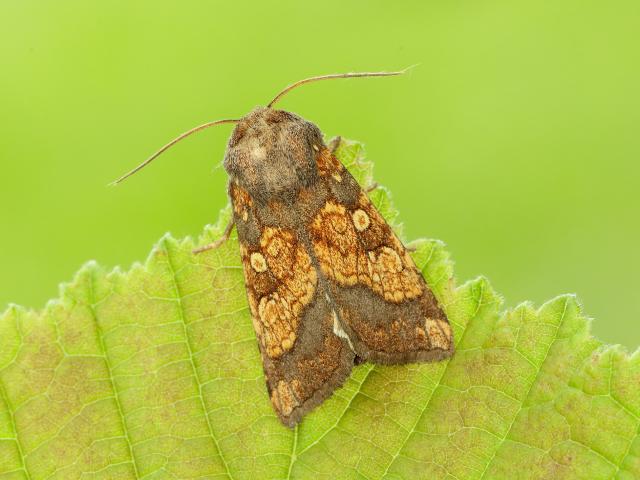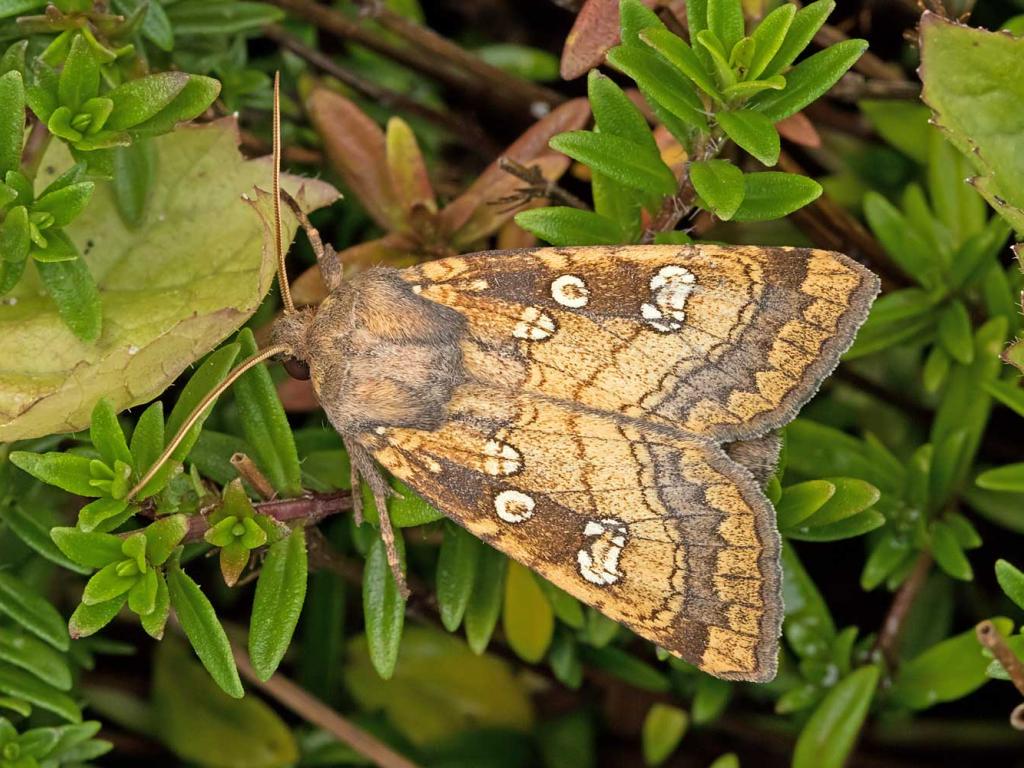
Frosted Orange
This rare noctuid moth looks similar to Frosted Orange but is paler and much larger. In Britain, it is only found in North Essex and Kent. The larvae are dependent on the food plant, Hog’s Fennel, which also has a very limited distribution and is at risk from sea-level rise and poor habitat management. Efforts are being made to increase suitable habitat for the moth and establish populations that are safe from flooding.
Eggs are laid on coarse grasses such as Sea Couch or False Oat-grass, and the larvae hatch in late spring. The larvae feed within the stems and roots of the food plant before pupating, with the adults emerging in autumn.
The adults are nocturnal and fly from early September to late October.
Family – Xyleninae
Medium-sized
UK BAP: Not listed
Red Data Book (protected species)
The larvae feed on Hog’s Fennel (Peucedanum officinale), a tall umbellifer that grows in coastal areas but cannot tolerate saltwater.
It lives by sea-walls and coastal grassland on the eastern coast of England.
Countries – England
It is very local with the only known British populations being in North Essex and two sites in Kent.

Fisher’s Estuarine Moth - Peter Maton
Peter Maton